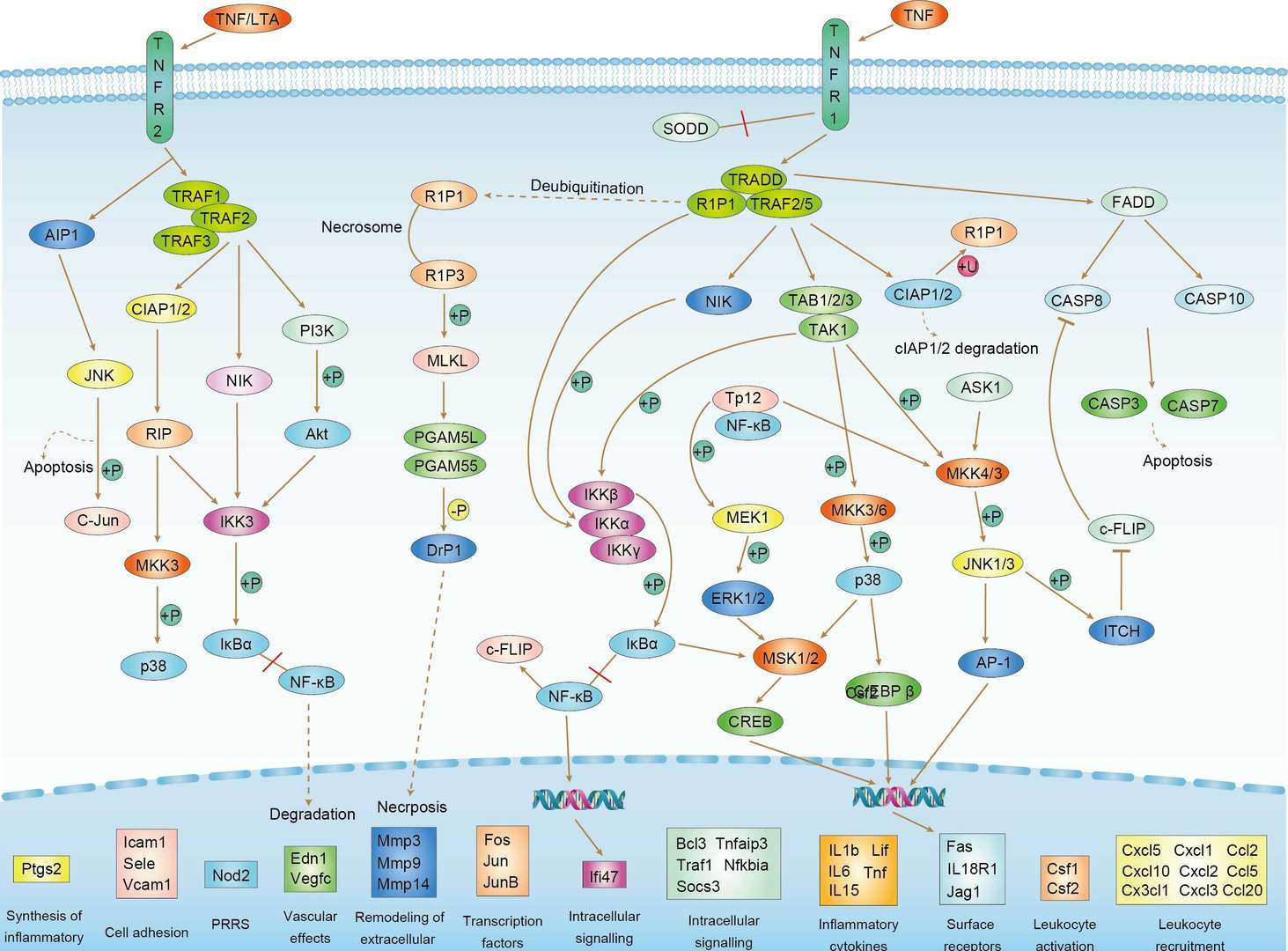 Loading...
Loading...

MLKL
Enzymes, Metabolic proteins, Transporters
Intracellular
Cell type enhanced (Adipocytes, granulocytes, Macrophages, Endothelial cells)
Low immune cell specificity
Low cell line specificity
Homooligomer (PubMed:29883610). Homotrimer; forms homotrimers on necroptosis induction (PubMed:24316671). Upon TNF-induced necrosis, forms in complex with PGAM5, RIPK1 and RIPK3 (PubMed:22265414). Within this complex, may play a role in the proper targeting of RIPK1-RIPK3 to its downstream effector PGAM5 (PubMed:22265414). Interacts with RIPK3; the interaction is direct and promotes its phosphorylation and subsequent activation (PubMed:22265413, PubMed:22421439, PubMed:29883609).
- Mouse Anti-MLKL Recombinant Antibody (clone 6F8) (MOB-0181F)
-
- Species Reactivity: Human
- Type: Mouse IgG
- Application: IF, IHC-P
-
- Species Reactivity: Human
- Type: Rabbit IgG
- Application: WB, IHC
- Mouse Anti-MLKL Recombinant Antibody (clone 6B4) (MOB-0182F)
-
- Species Reactivity: Human
- Type: Mouse IgG
- Application: IHC-P, IF
- Mouse Anti-MLKL Recombinant Antibody (clone 8H7) (MOB-0106F)
-
- Species Reactivity: Human
- Type: Mouse IgG
- Application: IHC-P, IF
- Rabbit Anti-MLKL Recombinant Antibody (clone AFY0045) (MOR-0074-FY)
-
- Species Reactivity: Mouse, Rat
- Type: Rabbit IgG
- Application: IF, IHC-P, WB
-
- Species Reactivity: Mouse
- Type: Rabbit IgG
- Application: WB, IHC, IP
-
- Species Reactivity: Human
- Type: Rabbit IgG
- Application: WB
- Rabbit Anti-MLKL Recombinant Antibody (VS3-WK1063) (VS3-WK1063)
-
- Derivation: Rabbit
- Species Reactivity: Human
- Type: Rabbit IgG
- Application: WB, IHC, IF
-
- Species Reactivity: Human
- Type: Rabbit IgG
- Application: ELISA, IHC
-
- Species Reactivity: Human, Mouse
- Type: Rabbit IgG
- Application: WB, IHC-P
-
- Derivation: Mouse
- Species Reactivity: Human
- Type: Mouse IgG1
- Application: IHC
-
- Derivation: Mouse
- Species Reactivity: Human
- Type: Mouse IgG1
- Application: IHC
Our customer service representatives are available 24 hours a day, from Monday to Sunday. Contact Us
Can't find the products you're looking for? Try to filter in the left sidebar.Filter By Tag
For Research Use Only. Not For Clinical Use.

 TNF Signaling Pathway
TNF Signaling Pathway